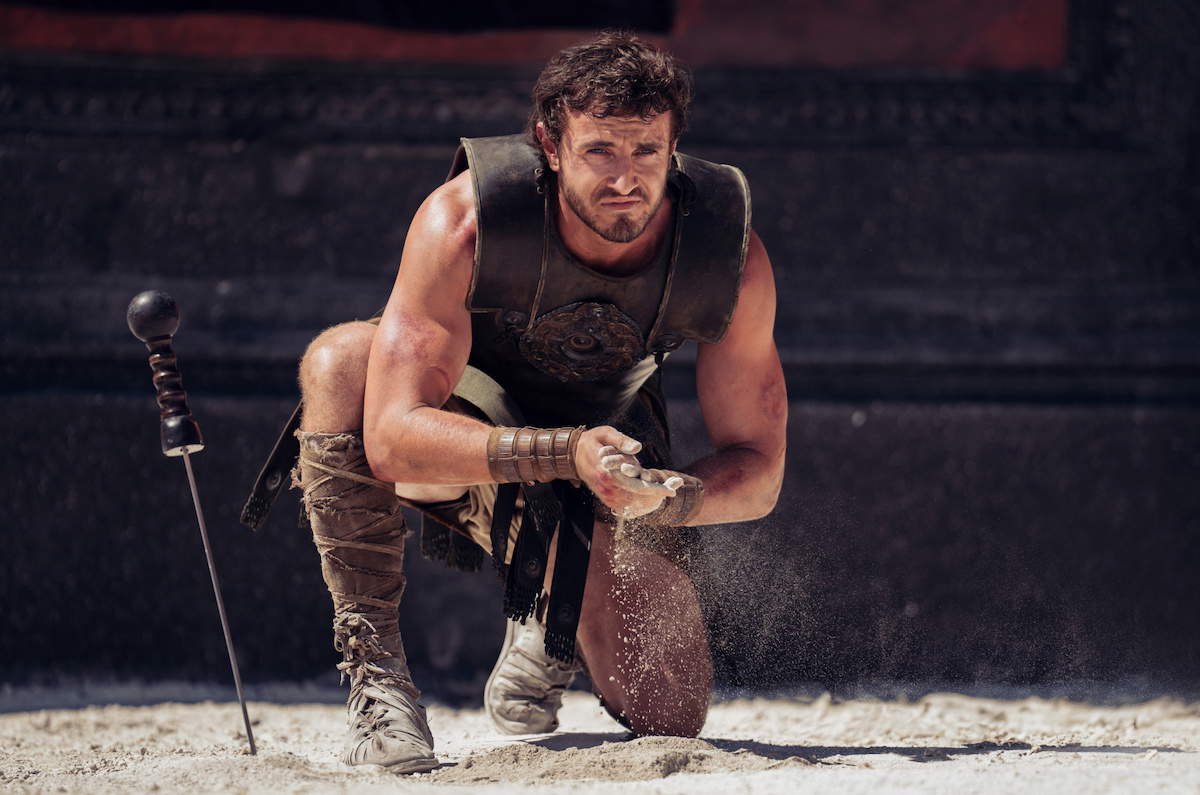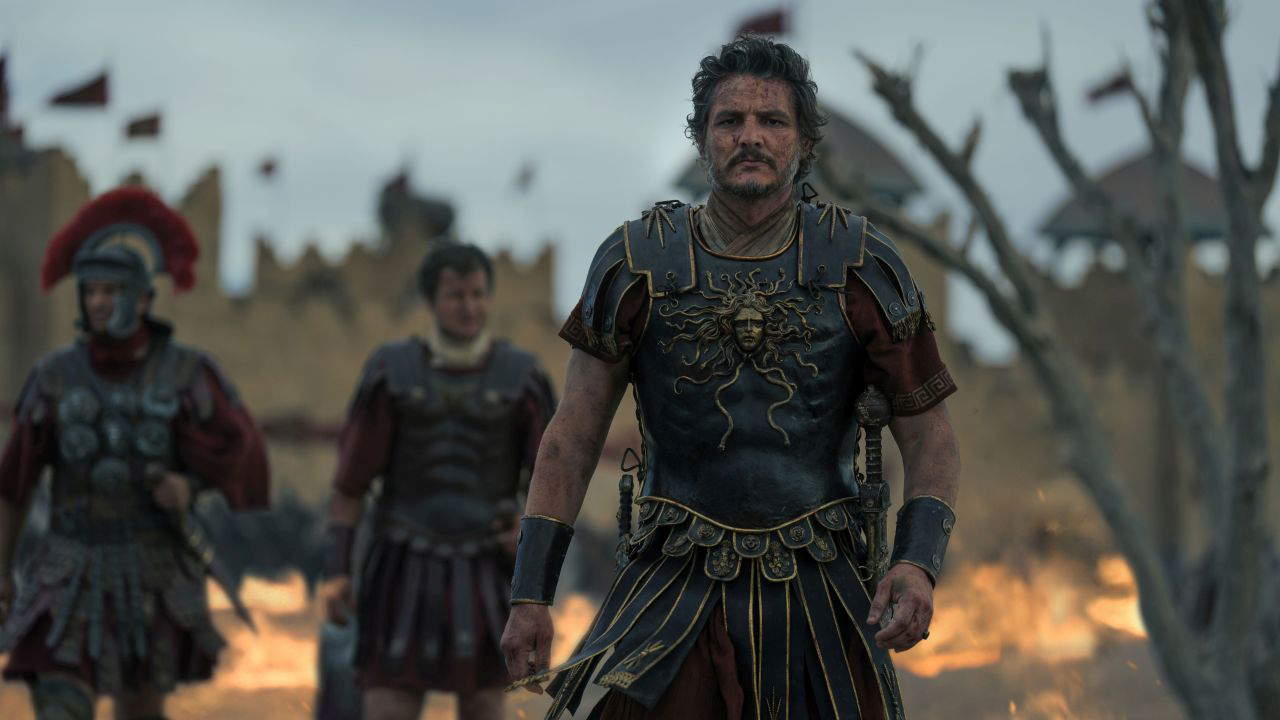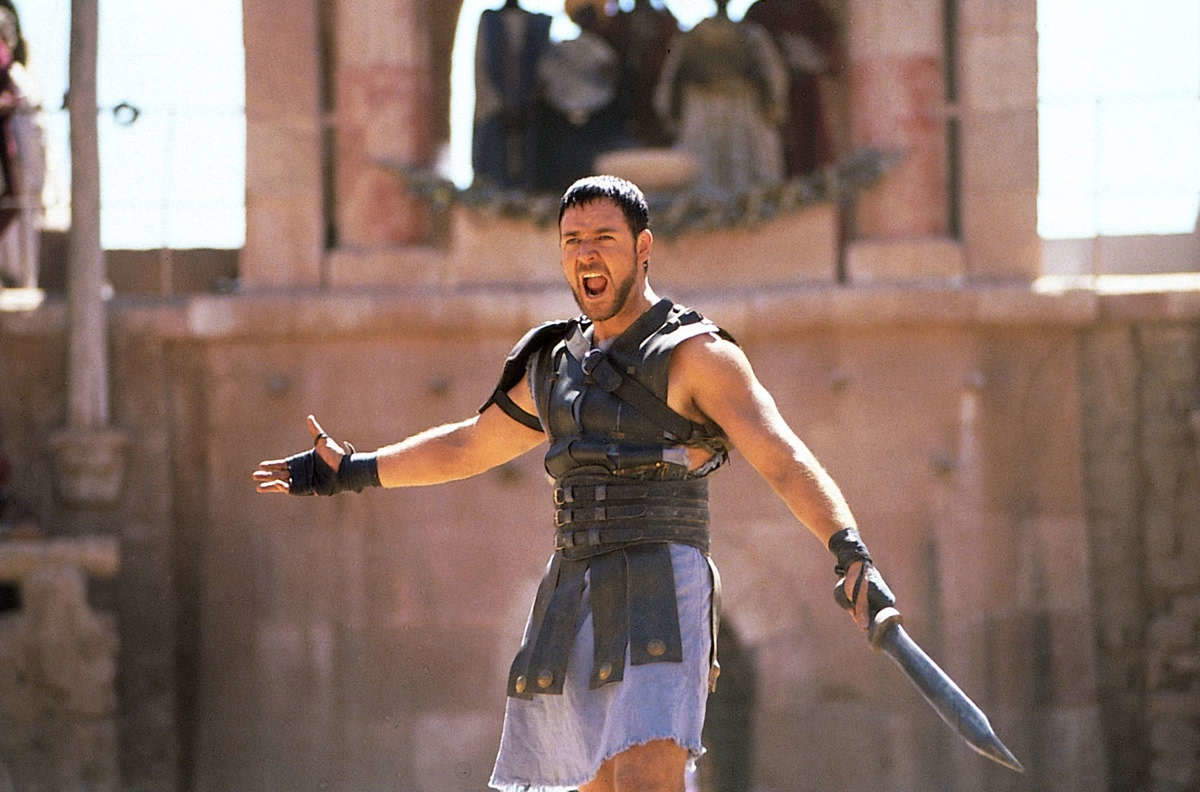Gladiator II, a historical film? No, pure science fiction. Released in Italy on Nov. 14, The Gladiator II, the sequel to the film that gave international notoriety to Russell Crowe, his “On my signal all hell breaks loose” having entered the common phrasebook, tests the judgment of historians as it did, on the other hand, with the first chapter. Let us try to see what the sprightly 86-year-old Ridley Scott came up with in history for a Ben Hur-style colossal in both the first and second chapters.
Notwithstanding the fact, of course, that a good movie to be such for the viewer does not necessarily have to be historiographically correct: even science fiction is a good story. Ridley Scott has precisely stated in several interviews that historical accuracy was not the main goal of the film. Gladiator, he has said repeatedly, began as a work of fiction simply inspired by ancient Rome, with narrative licenses designed to create a compelling story rather than to adhere to historical facts. So let us review, without wishing to detract from its cinematic value, some of the historical inaccuracies, from the most minute to those that would collapse the plot, of The Gladiator II (without spoiling too much) and then let us look at those of The Gladiator.

The Gladiator II (“two” in Roman numeral, mind you) takes place 20 years after the first film and follows the story of Lucius Verus (played by Paul Mescal), the son of Lucilla (Connie Nielsen) and grandson of Marcus Aurelius. Without revealing too much plot, let’s see how the film is presented in its 150-minute runtime (get comfortable) by Eagle Picture production: "Directed by legendary director Ridley Scott, Gladiator II continues to tell the extraordinary saga of power, intrigue and revenge in ancient Rome. Years after witnessing the tragic death of the revered hero Maximus at the hands of his treacherous uncle, Lucius finds himself forced to fight in the Colosseum after his homeland is conquered by two tyrannical emperors who now rule Rome. With his heart burning with rage and the fate of Rome hanging by a thread, Lucius must face danger and enemies, rediscovering in his past the strength and honor needed to restore Rome’s glory to its people."
While respecting the desire for suspense of those who will want to see this undoubtedly spectacular American film we can still give an account of the judgment of University of Chicago professor Shadi Bartsch who called it “total Hollywood bullshit” . But she was not the only one to nitpick the film’s scenes.
Let’s start with the spectacular naval battle inside the Colosseum whose images can also be seen in the trailer, with epic and adrenaline-fueled fighting: it indeed recalls naumachiae but they did not take place in the era set in the film and the presence of sharks is in no way proven and it is highly unlikely that it could have taken place. The Romans knew of no sharks in the Mediterranean and in any case would never have been able to capture one alive and transport it from the harbor, even if it had been Ostia, to Rome, and put sufficient seawater in the Amphitheater. Also unrealistic is the scene of the two-horned rhinoceros ridden by a gladiator: this species of rhinoceros from India had not reached Rome.
Also improbable is the figure played by Denzel Washington, the film’s great protagonist, in the Barack Obama version of ancient Rome, who invokes American ideals summarized in the phrase: “I was a slave and now I control the Empire. Where but in Rome can this happen?” The character he played, Macrinus, actually existed; he was born in Algeria in the second century A.D. However, he came from a wealthy family of equestrian origin. As for the ebony-colored skin, it must be said that the writings describe Macrinus as a man of Mediterranean descent, and his darker skin than Caucasian may have been at most similar to that of inhabitants of Spain, Sicily or Egypt.
Thesiege of Numidia with which the film set in 200 A.D. begins is anachronistic since that land in that year was already Roman in reality. Time mistake also for the two brothers who rule Rome: in that year in fact they were not Geta and Caracalla on the throne, but their father Septimius Severus, who would die in 211. As also Lucilla, sister of Commodus: in reality, historians date Lucilla’s death between 182 and 183 AD after being exiled by her brother to Capri. In Ridley Scott’s fantasy, Lucilla finds her old lost son and marries (in a second marriage) General Acacius (Pedro Pascal), who, however, would never have existed. Much less real is that sort of cafeteria in which Denzel Washington sips a drink that should be morning tea or coffee while reading the day’s news in a ’newspaper’ at least 1,200 years ahead of the invention of printing. The daily news to be read was there and was called Acta Diuma but it was carved and placed in outdoor locations. All digressions and adjustments are expedients for the needs of drama. A great American production suitable for those who love the genre. Good viewing.



Released in 2000, it received numerous awards, including five Oscars, including Best Picture and Best Actor in a Leading Role won by Russell Crowe, and also highly praised was the score by Hans Zimmer and Lisa Gerrard. It is considered by many to be one of the director’s best films.
We are in ancient Rome, and the story tells the story of General Maximus Decimus Meridius (Russell Crowe), who after being betrayed by Emperor Commodus (Joaquin Phoenix), son of Emperor Marcus Aurelius, ends up in slavery and then a gladiator to seek redemption, freedom and revenge. First of all, it must be said that such a circumstance could not occur because a Roman law, the Postliminium, stipulated that a Roman citizen imprisoned in war, and thus enslaved by the enemy, would regain his freedom as soon as he returned to Rome, however he returned there. So the film could not even begin, not least because there never existed a Roman general named Maximus Decimus Meridius. Much less could he have said the famous line “At my signal unleash hell”: hell is Christian in nature, not pagan in nature, and Hades was not comparable to Christian hell.
In the film, Commodus kills his father Marcus Aurelius: this is false since the emperor died of disease, probably smallpox, and certainly not suffocated as in the film by his son. Rather, it was Commodus who died strangled by a conspiracy, and certainly not at the Colosseum in combat against a gladiator. Colosseum which is repeatedly called that in the film, but in fact this term will be coined in the Middle Ages: for the Romans it was simply the Flavian Amphitheater. At that time, moreover, smallpox was the cause of a terrible epidemic, which was called the Antonine plague, throughout the empire, causing carnage, but in the film there is barely a mention of such a thing being relegated to a neighborhood in Rome. The part of the film about wanting to return to a republic after the death of Commodus is then anti-historical: the idea of modern democracy as a solution to all of society’s ills and the ultimate goal to strive for in freedom battles was unknown in Commodus’ time. Indeed, it was the senators themselves who sought a new emperor, since the empire was the ideal continuation of what had been the republican form of government.
The scene of the battle in the snow against the Germans cannot have existed since during the winter the Romans stopped their wars precisely because of the problem of bad weather. And experts in battles and war strategies point out that during the fighting of the Roman army we do not see the typical mutatio as a fighting technique and rather we see a ’breakthrough’ that could not have happened.
The swords that shine in the film of the reflection of sunlight, then, are unrealistic, as they were not made of steel. Also impossible is the use of crossbows (instruments invented many centuries later) that are seen in the film in no less than two scenes in the Colosseum, where lions, not tigers, could actually be seen.
Lucilla, the sister of Commodus and daughter of Marcus Aurelius in the film has a son, Lucius, but in reality she never had any offspring. As for the reconstruction of Rome, it should be noted that the lake of the Domus Aurea behind the Flavian Amphitheater that is seen toward the end is unrealistic since the basin was drained precisely to lay the foundations of the Colosseum. The aerial shots showing the Arch of Constantine and the Basilica of Maxentius are also historical fakes as they would have been built centuries later.



 |
| All the historical inaccuracies in The Gladiator II |
Warning: the translation into English of the original Italian article was created using automatic tools. We undertake to review all articles, but we do not guarantee the total absence of inaccuracies in the translation due to the program. You can find the original by clicking on the ITA button. If you find any mistake,please contact us.